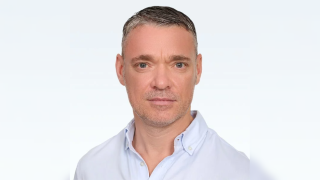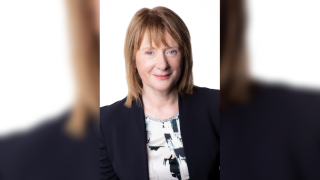Say “Iridium” to most people in the industry and they will still recall it – falsely – as one of the big disasters of the dotcom era. Yes, it was a disaster in the early days, but today it’s a resounding success in the growing low Earth orbit (LEO) satellite business.
Iridium generated US$614.5 million in revenue last year, from 1,720,000 worldwide subscribers, a number growing at 15% a year: there were 969,000 in 2017. Capex dropped from $400 million in 2017 to just $42 million last year. Internet of Things [IoT] data subscribers, now 74% of the customer base, are growing at 24% a year.
Back in the late 1990s Motorola didn’t quite believe that digital mobile communications would boom as they did. It was seen as a market for an élite. Motorola thought the best method to cover as much of the globe as possible was to launch 77 satellites.
That’s the atomic number of iridium: hence the name of the company. Iridium is mainly found on Earth in the deposits left by the asteroid that hit what’s now Chicxulub in Mexico 66 million years ago, wiping out the dinosaurs. And in 1999 Iridium, trimmed for the sake of economy to 66 satellites, almost wiped out Motorola.
Boom and crash
Iridium’s commercial launch was on 1 November 1998, with a call from US Vice President Al Gore to a great-grandson of Alexander Graham Bell; and it went into bankruptcy nine months later, August 1999, like an early NASA rocket falling back to the launchpad. Few companies in the dotcom boom and bust years flared and crashed so quickly.
A year later there was a plan to bring down all the satellites, but Iridium was rescued by a two-year US government contract worth $72 million. In March 2001 the company was bought out of bankruptcy for just $25 million, wiping out $4 billion of debt.
The US government has been a key customer for Iridium since the earliest days.
The company used to have a heatmap on its website showing where the users were. A decade after the first Gulf War, Iraq was clearly a big market. There were no mobile phones in Iraq then and Iridium was almost fulfilling its original purpose. After the 9/11 attacks in 2001, there was more business, from the allied forces in Afghanistan.
Today, there is a thriving, vibrant business based on the latest incarnation of Iridium, which has been led by Desch since 2006, two years before the first ITW was held in Washington.
He joined the company after a career working at Nortel Networks and then at Telcordia Technologies, where he was CEO for more than three years. He also chaired technology company Airspan Networks for almost a decade.
Of all the satellite companies that started up almost a quarter of a century ago, Iridium is one of the survivors, though only after a $3 billion injection of finance thanks to a campaign masterminded by Desch.
That paid for a completely new constellation of satellites, called Iridium Next.
The last of the Motorola-era fleet went out of service in February 2019. SpaceX launched all the new satellites, with a contract signed in the very early days of Elon Musk’s rocket company.
“Everybody has invested lots of money in space,” Desch tells me. “We have ridden that and steered away from commodity markets.”
Aircraft and IoT
He believed in the concept of LEO satellites, not for delivering phone calls about the weather from a Caribbean island vacation back home to the US, but for the Internet of Things (IoT), connecting aircraft and ships, soldiers in the field, and many other points that are not easily served.
“It has only taken 30 years to get here. It has taken a long time to become a high cashflow, high-growth company.”
Now, he’s “very excited about the next five years”, an interval that will take him to his 20th anniversary at the top of the company. “The environment is conducive to strong growth.”
And, he points out, he has been joined by SpaceX’s Starlink, by Amazon’s Kuiper, by OneWeb and by Telesat, all working in the LEO business but “complementary to what we do”, he says. “We focus on extreme mobility. We are the most successful player in satellite IoT.”
The company has “radios the size of a quarter”. A quarter dollar is 24.26mm in diameter – just under an inch – says the US Mint. “The cost is a few dollars a month,” Desch adds. “That’s the future of what we are doing.”
The market is “devices that connect people and things”, but the available bandwidth is small, “tens of kilobytes”, he says. The aim is to embed these quarter-sized units into “smartphones, cameras watches”, but “that’s still in the future for a company like us”. The aim is to be pervasive.
Poles and oceans
“Remember, 85% of the Earth’s surface doesn’t have cellphone coverage,” he adds. This includes “poles and oceans – and, where there is coverage, it’s patchy”.
Three years after the last of the firstgeneration satellites burned up and plunged into the ocean, Iridium today generates cash – something that has been an essential part of his vision over the past decade. “I knew it would take a long time to replace the network, but now the cashflow is good.”
That has enabled Iridium to recruit “lots of new partners” for its “new, powerful platform”, he says. There is a new generation of applications that could not have been delivered from the old satellites: for autonomous vehicles and consumer devices, he says.
“We still make satellite phones, and that market is growing, though it wasn’t what I came into Iridium for.”
Having been through a long and expensive process of replacing the first fleet, he is not yet worrying about the second. “Some cheap, small satellites need replacing every few years, but it will be at least 10 years before we need to replace ours.”
The satellites orbit at 780km above the surface, making a complete circuit every 100 minutes. That means they move fast: the circumference of the Earth is 40,000km, so in one minute each satellite covers 400km. If one is over Washington now, it will be over Montréal in a minute. “They move fast so you can’t jam them,” says Desch. “Our network is resilient.”
And, unlike some LEO constellations, Iridium’s satellites communicate with each other. That means the company needs only four ground stations, three in the Americas – Alaska, Arizona and Chile – and one in Norway. The first generation of Iridium had seven more than that.
That’s enough for global coverage, says Desch. “There’s nothing worse than saying we work there, but not here. We just work everywhere.” There are, he notes, “a few places where we are not allowed to be sold”, but anyone who buys Iridium kit will find it “still works everywhere. Iridium covers the whole planet,” he says.
“There are more than 500 companies that connect,” he adds, listing Airbus, Garmin, Honeywell, Qinetic and Raytheon. Air traffic management is an important role for the company, “with about 1,000 people working with Iridium” in this field.
And next? What’s next for Desch after such a long time? “After 15 years you do start wondering. But it’s technically an interesting environment. I’m here because of our mission.”
That doesn’t stop: “We are re-architecting the system to give us a capacity improvement, rewriting the satellite software and the enduser developer software.” That will be done by 2025, he says. “It’s like changing the motor on the bus as it’s moving down the road.”
Other companies are trying to replicate “cellphone networks in space”, he says. “But they don’t appreciate how hard it is.” The market is “too small for the giant telcos that are interested in 5G”. Mobile services have become a commodity, “but what is the coverage?” he asks.
“We are quickly becoming a differentiator for end-user apps.” Meanwhile, many of his rivals “are going after fixed connectivity in a rural environment”, he says. “When is Starlink going to be cash-producing? It took us 30 years. Will they go public? [The first Iridium] did it in 1998 but it didn’t work out. Will they be around in 50 years, which is what I’ve been working on for Iridium?”
There are “lots of companies that are building mega-constellations”, covering broadband, narrowband, IoT, Earth observation, weather observation, radio programming. There are 15-20 companies that are public, all trading very poorly.”
Desch loves taking part in panels alongside others in the industry, “but I feel for them. It has made us a very pragmatic, focused company,” he says. “It’s exciting in space, but it’s also scary.”






